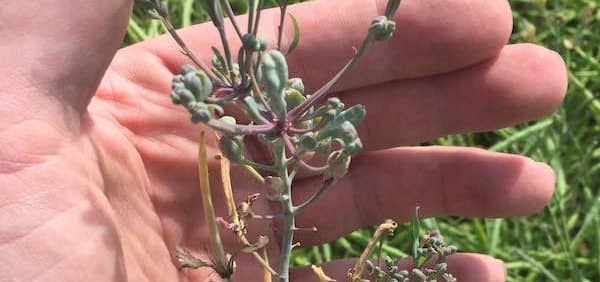Abnormal terminal growth on flowers, pods and stems could be a symptom of aster yellows, midge or thrips.
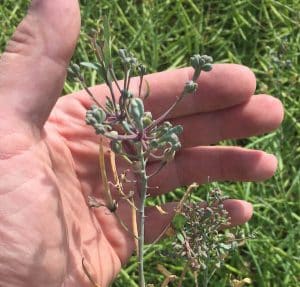
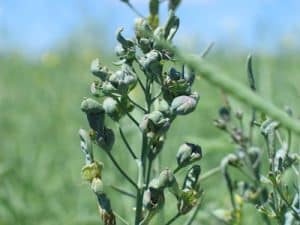
Aster yellows: The phytoplasma infection causes misshapen pods and flower buds. Saskatchewan Ministry of Agriculture provides this detailed description: “Malformed flowers and pods are the most obvious symptoms of aster yellows in canola. Flowers are replaced by sterile, green leaf-like structures, and pods are replaced by round or oval blue-green hollow, flattened bladder-like structures. Infected plants may become woody and are often taller than the rest of the crop canopy.”
Some plants with aster yellows can produce pods that look fairly normal but still have significant losses due to poor seed formation. Late or mild infections, for example, could lead to poor seed set in normal-looking pods. Aster leafhoppers, which come up each year on south winds from the U.S., carry the phytoplasma. Aster yellows Q&A
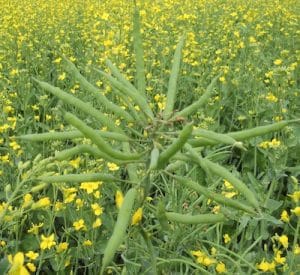
Canola flower midge: The younger the canola plant, the greater the damage from these larvae hatching from the growing point. Damage typically includes one or more of the following:
—Distorted and twisted young shoots, and stunted growth if damage is very early.
—Misshapen individual buds in a bud cluster.
—Normal expansion of the primary raceme, but individual flowers are abnormal or only the flower stem and a small dried flower remnant remains.
—The primary raceme may be normal, but secondary branches may be stunted if infestation occurs later in flowering.
—Pods may form in a cluster because the growing point is damaged and stem elongation cannot occur. Sometimes secondary branches will look fine, and compensate to some extent. More detail and photos.
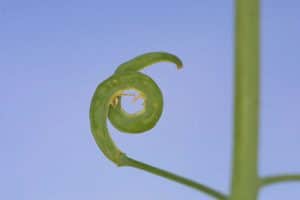
Thrips: These tiny insects cause curled or twisted pods on canola. They are the only insect known to do this. The good news is that economic levels of damage from thrips are very rare. More detail and photos.

